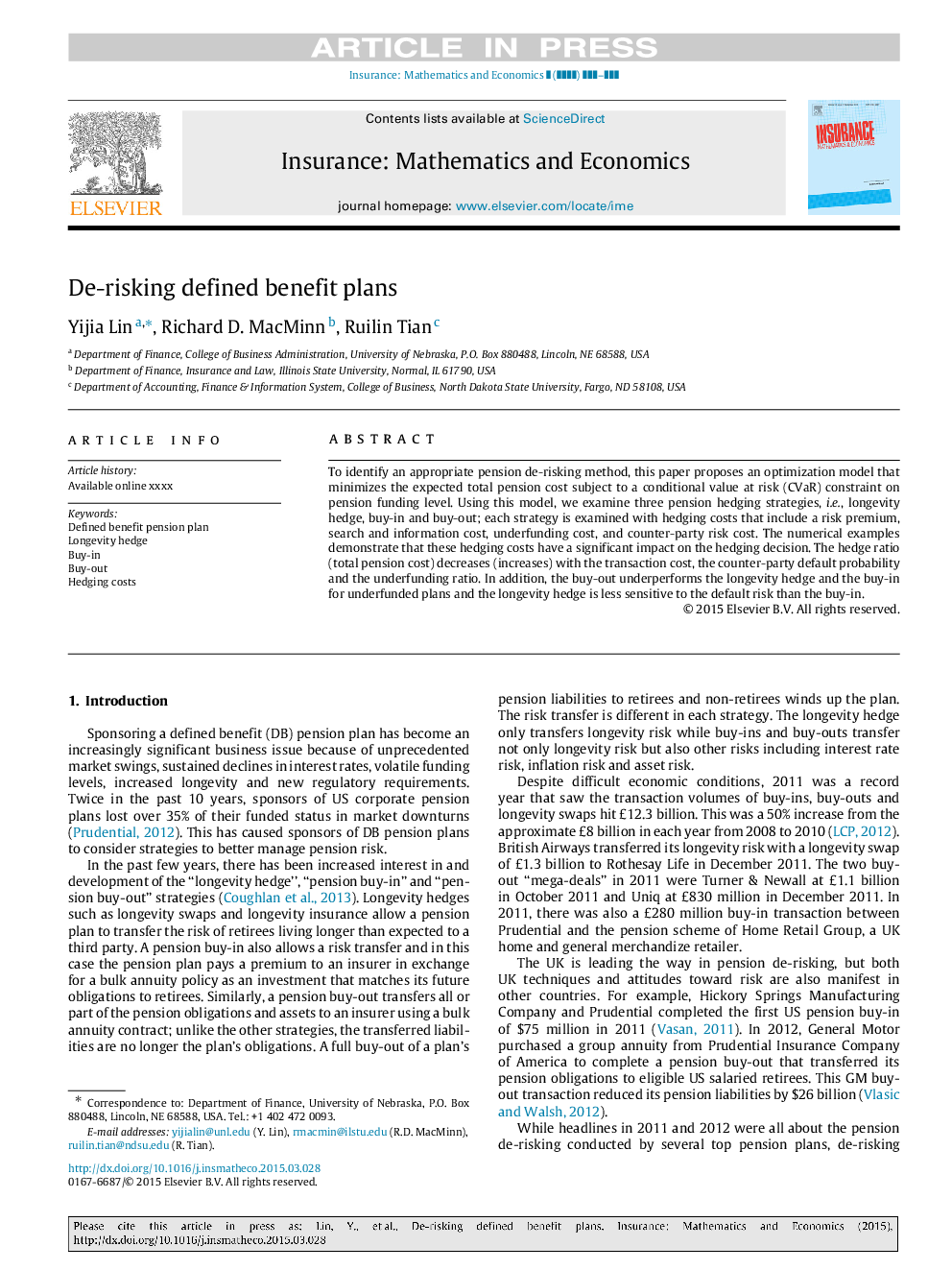| Article ID | Journal | Published Year | Pages | File Type |
|---|---|---|---|---|
| 5076314 | Insurance: Mathematics and Economics | 2015 | 14 Pages |
Abstract
To identify an appropriate pension de-risking method, this paper proposes an optimization model that minimizes the expected total pension cost subject to a conditional value at risk (CVaR) constraint on pension funding level. Using this model, we examine three pension hedging strategies, i.e., longevity hedge, buy-in and buy-out; each strategy is examined with hedging costs that include a risk premium, search and information cost, underfunding cost, and counter-party risk cost. The numerical examples demonstrate that these hedging costs have a significant impact on the hedging decision. The hedge ratio (total pension cost) decreases (increases) with the transaction cost, the counter-party default probability and the underfunding ratio. In addition, the buy-out underperforms the longevity hedge and the buy-in for underfunded plans and the longevity hedge is less sensitive to the default risk than the buy-in.
Keywords
Related Topics
Physical Sciences and Engineering
Mathematics
Statistics and Probability
Authors
Yijia Lin, Richard D. MacMinn, Ruilin Tian,
